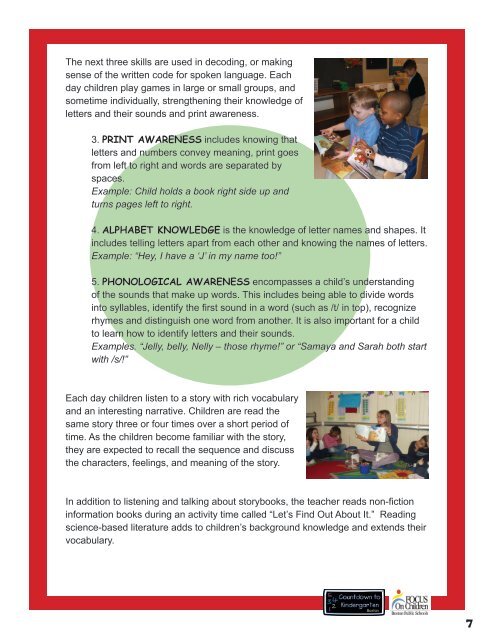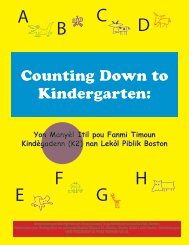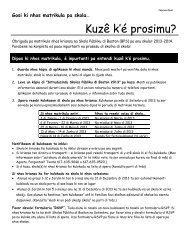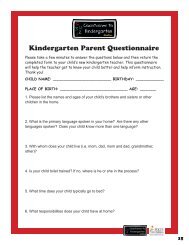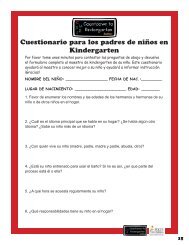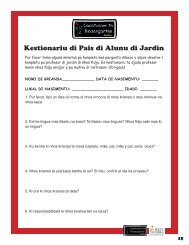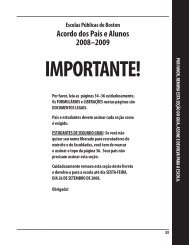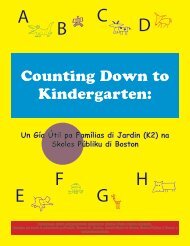Kindergarten Handbook - Countdown to Kindergarten
Kindergarten Handbook - Countdown to Kindergarten
Kindergarten Handbook - Countdown to Kindergarten
You also want an ePaper? Increase the reach of your titles
YUMPU automatically turns print PDFs into web optimized ePapers that Google loves.
The next three skills are used in decoding, or making<br />
sense of the written code for spoken language. Each<br />
day children play games in large or small groups, and<br />
sometime individually, strengthening their knowledge of<br />
letters and their sounds and print awareness.<br />
3. PRINT AWARENESS includes knowing that<br />
letters and numbers convey meaning, print goes<br />
from left <strong>to</strong> right and words are separated by<br />
spaces.<br />
Example: Child holds a book right side up and<br />
turns pages left <strong>to</strong> right.<br />
4. ALPHABET KNOWLEDGE is the knowledge of letter names and shapes. It<br />
includes telling letters apart from each other and knowing the names of letters.<br />
Example: “Hey, I have a ‘J’ in my name <strong>to</strong>o!”<br />
5. PHONOLOGICAL AWARENESS encompasses a child’s understanding<br />
of the sounds that make up words. This includes being able <strong>to</strong> divide words<br />
in<strong>to</strong> syllables, identify the first sound in a word (such as /t/ in <strong>to</strong>p), recognize<br />
rhymes and distinguish one word from another. It is also important for a child<br />
<strong>to</strong> learn how <strong>to</strong> identify letters and their sounds.<br />
Examples. “Jelly, belly, Nelly – those rhyme!” or “Samaya and Sarah both start<br />
with /s/!”<br />
Each day children listen <strong>to</strong> a s<strong>to</strong>ry with rich vocabulary<br />
and an interesting narrative. Children are read the<br />
same s<strong>to</strong>ry three or four times over a short period of<br />
time. As the children become familiar with the s<strong>to</strong>ry,<br />
they are expected <strong>to</strong> recall the sequence and discuss<br />
the characters, feelings, and meaning of the s<strong>to</strong>ry.<br />
In addition <strong>to</strong> listening and talking about s<strong>to</strong>rybooks, the teacher reads non-fiction<br />
information books during an activity time called “Let’s Find Out About It.” Reading<br />
science-based literature adds <strong>to</strong> children’s background knowledge and extends their<br />
vocabulary.<br />
7


